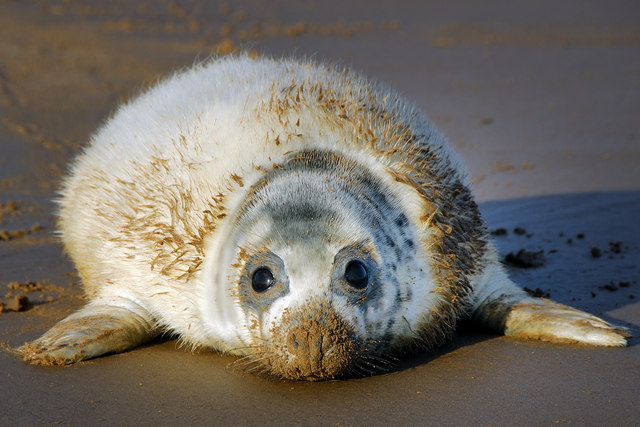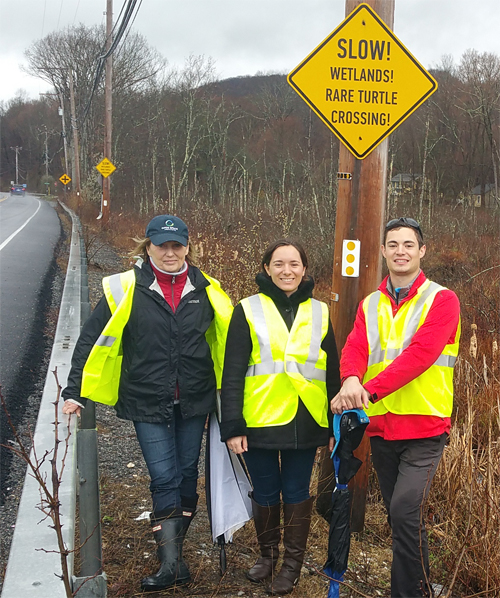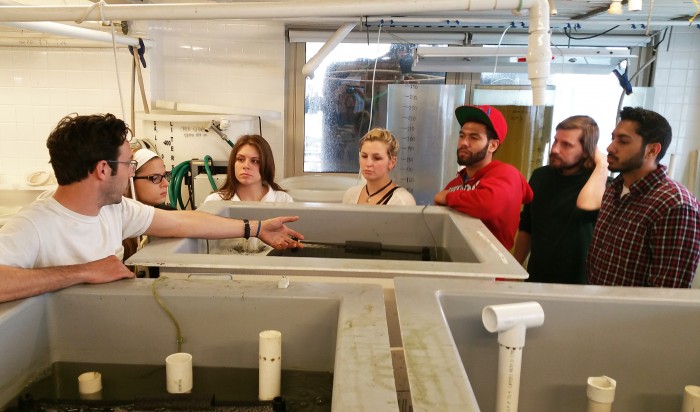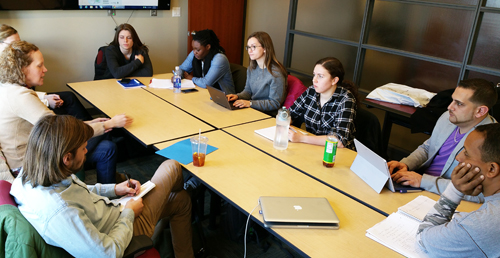Editor’s Note: EarthDesk is delighted to welcome back Elizabeth Bradfield (EarthDesk, October 13). This post also appears on her blog, The Haul Out, which explores the reestablishment of gray seals on Cape Cod, its effects “on those of us who live on or visit Cape Cod,” and “wider discussions of seals around the world, research, history, and other seal-related investigations.” More on Liz at the conclusion of the post. — John Cronin

Gray seal pup. Julian Dowse [CC-BY-SA-2.0], via Wikimedia Commons
On November 1, an article in the Norfolk Eastern Daily Press announced that the first gray seal of the year was born on Blakely Point. On Cape Cod, we’ll have to be patient a while longer.
Gray seals in the UK and Ireland are born from July – December, but in the Northwest Atlantic they wait a few more months until the seas are whipped to froth and spray ices the shore. December through February are the months for pupping and breeding for gray seals here.
And they don’t breed, for the most part, in the places we see them during the summer. Forget walking from your car for a few minutes in North Truro or puttering out into Chatham Harbor. Muskeget Island, just off Nantucket, and Monomoy are the important breeding locations on the Cape and Islands. It’s raw out there.
But a young gray seal is quite something – white and fluffy with big, brown eyes. Classically cute. Pups are born with what’s called a lanugo coat. This light, wooly coat is great protection from cold on land, which is a good thing when you think of January on the beach, but not much good in the water. Before heading out to sea, the pups need to moult into their adult coat. All of this happens pretty fast.
Gray seal pups nurse for only 17-18 days, gaining between 1.2-2 kg each day. After that, they’re bloated as a tick and on their own. Their mothers take off. The pups live off their fat stores and then, anywhere from a week to a month after being weaned, they head out to sea. They’ve got to figure out how to swim, hunt, rest, socialize, and live without adult instruction. It’s tough. Many of them – between 30 and 55% – don’t make it.

Distribution of the gray seal. Via The Haul Out
Gray seals are found from New York to Canada on the east coast of North America. There are also populations around Iceland, the UK and Ireland, Norway, Northwestern Russia and the Baltic Sea. The seals over there breed at different times.
The seals around the UK get an early start, with some populations breeding as early as July and others, like the one mentioned above, getting going in November and December. In the Baltic population, most breeding occurrs between February and April.
Life at a rookery is noisy and chaotic. Pups are being born, adults are coming onto and off of the beach, males are waiting for the females to be done with mothering and get on with making next year’s young. It’s messy. It’s pungent. Really, it’s awesome. I wish more people had a chance to see these animals in their first weeks.
«« »»
 Elizabeth Bradfield started The Haul Out “Because it’s not often that, on the Eastern Seaboard, we get to watch a place ‘rewild.'” Haul out is a term that refers to the location at which seals, sea lions, or walruses frequently rest on shore. She is the author of two poetry collections: Approaching Ice and Interpretive Work. Her poems have appeared in The New Yorker, The Atlantic, Orion, The Believer, Poetry and elsewhere. Founder and editor-in-chief of Broadsided Press, she lives on Cape Cod, works as a naturalist locally and on expedition ships, and is the current Poet-in-Residence at Brandeis University and on the faculty of the low-residency MFA program at University of Alaska Anchorage. More about Liz at www.ebradfield.com.
Elizabeth Bradfield started The Haul Out “Because it’s not often that, on the Eastern Seaboard, we get to watch a place ‘rewild.'” Haul out is a term that refers to the location at which seals, sea lions, or walruses frequently rest on shore. She is the author of two poetry collections: Approaching Ice and Interpretive Work. Her poems have appeared in The New Yorker, The Atlantic, Orion, The Believer, Poetry and elsewhere. Founder and editor-in-chief of Broadsided Press, she lives on Cape Cod, works as a naturalist locally and on expedition ships, and is the current Poet-in-Residence at Brandeis University and on the faculty of the low-residency MFA program at University of Alaska Anchorage. More about Liz at www.ebradfield.com.









